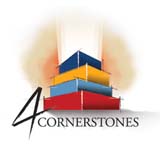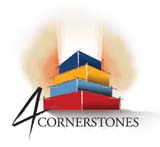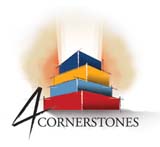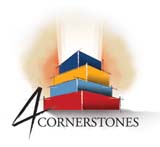Dr. Ralston's Teaching Philosophy
Preparing students for a career in the leisure service industry has been a very rewarding experience for me. It has provided me with the opportunity to help students develop a passion for the learning and serving people in our discipline. It brings me great joy to see my students grow in confidence and leadership skills in the parks, recreation and tourism professions. The following philosophy serves to focus and prioritize my instructional activities to give my very best to my students, university, and profession.
- Check out my recorded video reviewing my teaching philosophy entitled "Establishing a Future Direction in Pursuit of Excellence."
First Cornerstone: "Ignite the Fire" within my students

It is my privilege to be entrusted with the responsibility to "light the fire" in the hearts of my students. My grandmother often told me that you can lead a horse to water but if the horse is not thirsty, he cannot be forced to drink. Students can be led into a classroom, persuaded to buy a book and may even read that book. If they are not interested in the subject matter, they will not learn. The primary role of the teacher is to entice the student to drink of the knowledge and thirst for more. Perhaps this is an oversimplification, but this motto is the first cornerstone of my approach to teaching. Whenever I enter the classroom or begin planning a lesson, I remember that I must share my zeal for learning, my dedication to excellence, my passion for parks, recreation, hospitality, and tourism, and "kindle the fire within my students!"
"The mind is a fire to be kindled, not a vessel to be filled." - Plutarch
"The mind is a fire to be kindled, not a vessel to be filled." - Plutarch
Second Cornerstone: Student-centered Learning

The student is our most important resource, a valuable resource that only needs to be tapped. It is important to recognize that students do not arrive in our courses as an "empty vessel" (continuing Plutarch's analogy); rather, they bring with them a wealth of experience and a range of ideas that shape how they make sense of new information and construct new knowledge. Each student is a complex individual with varying needs, interests, abilities, desires and career aspirations.
Step #1 - Know My Students! While students are learning about the subject, I attempt to learn about my students as individuals. I begin with a learning styles survey and a personal email sent to each student on the first day of the semester. Each class day, I arrive at class 20 minutes or more before the regular start time. This practice allows me sufficient time to welcome each student as they arrive. Many times students arrive in the classroom and seem distant or disengaged. I will spend time engaging them with questions and discussing what is happening in their own lives, other classes or to informally discuss current topics in the news. This ensures that students are comfortable talking with me. This will ensure that they are comfortable with asking questions regarding the assigned reading or upcoming assignment. It is important for me to build an open relationship with the students. This rapport with the students has proved instrumental in cultivating positive group dynamics and individual respect that facilitates open communication. By knowing my students, I can become cognizant of their own ideas and existing experiences and consequently design future lessons to build upon their knowledge and experience. Further, I encourage students to schedule a meeting with me each semester. It is important to stress alternatives for this type of interaction with fully online courses. I encourage students to contact me in person, by telephone, electronic mail, fax, Skype, IM (Instant Message) or via Canvas chat or mail.
Step #2 - Design learning activities and experiences to fulfill the needs and abilities of my students. During the orientation lesson, I challenge students to identify their preferred learning styles and provide them with several alternative learning activities and resources tailored for each of the different learning styles. For example, recorded lectures are provided to allow auditory (aural) and verbal learners to download and listen to the lectures repeatedly to foster comprehension and retention. I incorporate pictures, color, diagrams, and mind maps in my lecture presentations and study guides to assist visual (spatial) learners incorporate imagery, organize information, and communicate with others. In order to foster a positive learning experiences for verbal (linguistic) learners, I provide acronym mnemonics (focusing on the first letter of the word to make up another word or memorable sequence), role playing activities, and opportunities to verbalize relationships. Social learners typically prefer learning in groups or in a classroom so I foster opportunities to exchange ideas and experiences with their peers and listen to other students regarding their perspectives.
“It is our dream that students will …experience their classrooms as invigorating, even inspiring environments – places they look forward to going to and places they hate to leave. It is our dream that they will come to know themselves as masters of various crafts…It is our dreams that …they will come to love the process of learning itself… by making it their own.” ~ Paideia Schools
Step #1 - Know My Students! While students are learning about the subject, I attempt to learn about my students as individuals. I begin with a learning styles survey and a personal email sent to each student on the first day of the semester. Each class day, I arrive at class 20 minutes or more before the regular start time. This practice allows me sufficient time to welcome each student as they arrive. Many times students arrive in the classroom and seem distant or disengaged. I will spend time engaging them with questions and discussing what is happening in their own lives, other classes or to informally discuss current topics in the news. This ensures that students are comfortable talking with me. This will ensure that they are comfortable with asking questions regarding the assigned reading or upcoming assignment. It is important for me to build an open relationship with the students. This rapport with the students has proved instrumental in cultivating positive group dynamics and individual respect that facilitates open communication. By knowing my students, I can become cognizant of their own ideas and existing experiences and consequently design future lessons to build upon their knowledge and experience. Further, I encourage students to schedule a meeting with me each semester. It is important to stress alternatives for this type of interaction with fully online courses. I encourage students to contact me in person, by telephone, electronic mail, fax, Skype, IM (Instant Message) or via Canvas chat or mail.
Step #2 - Design learning activities and experiences to fulfill the needs and abilities of my students. During the orientation lesson, I challenge students to identify their preferred learning styles and provide them with several alternative learning activities and resources tailored for each of the different learning styles. For example, recorded lectures are provided to allow auditory (aural) and verbal learners to download and listen to the lectures repeatedly to foster comprehension and retention. I incorporate pictures, color, diagrams, and mind maps in my lecture presentations and study guides to assist visual (spatial) learners incorporate imagery, organize information, and communicate with others. In order to foster a positive learning experiences for verbal (linguistic) learners, I provide acronym mnemonics (focusing on the first letter of the word to make up another word or memorable sequence), role playing activities, and opportunities to verbalize relationships. Social learners typically prefer learning in groups or in a classroom so I foster opportunities to exchange ideas and experiences with their peers and listen to other students regarding their perspectives.
“It is our dream that students will …experience their classrooms as invigorating, even inspiring environments – places they look forward to going to and places they hate to leave. It is our dream that they will come to know themselves as masters of various crafts…It is our dreams that …they will come to love the process of learning itself… by making it their own.” ~ Paideia Schools
Third Cornerstone: Active & Authentic Learning

The third cornerstone of my teaching philosophy is focused on how we build a relationship between what we are learning and how these concepts are applied within the parks, recreation and tourism industry. Fortunately, my many years working in the leisure service field have prepared me to know the subject matter intimately. My professional and academic preparation has been essential in providing me with the tools and knowledge to go beyond the typical content of a textbook.
I use a variety of pedagogical methods grounded in my beliefs about teaching and learning.
Step 1: Whatever the specific subject, I feel it is important to create a need to know the subject matter. A teacher can create excitement by demonstrating how to apply the knowledge to the real world setting. Beyond the typical translation of a series of facts and concepts, students enjoy the opportunity to learn how to use the ideas in a real world setting. They savor the challenge to formulate decisions based on facts and ideas or discover new applications of "old" theories.
Foster critical thinking. It is important to facilitate opportunities for students to discover new solutions, apply concepts, and construct knowledge within their own mind. A crucial element of this technique is to challenge students to accept responsibility for their own learning. I encourage students to work with their peers to solve problems, examine case studies, or conduct research projects. It is important to ensure that everyone involved respect each individual's ideas, opinions, and contribution to the ever evolving community of learners. In this regard, I serve as an adviser and facilitator rather then the traditional expert or the "sage on center stage." I encourage a degree of rebellion and doubt where the textbook is concerned, by recognizing students who question traditional thought with new ideas. The leisure service field is a dynamic industry where the pace of growth and expansion has outstripped our textbooks. From a practitioner's viewpoint, I value the ability to think critically and solve problems using one's common sense. I try to reward students for making this leap in understanding the subject matter. you can learn more about specific tools and activities that I utilize to accomplish this goal by checking out my Course Resources on this website.
"Education is understanding relationships." - George Washington Carver
I use a variety of pedagogical methods grounded in my beliefs about teaching and learning.
Step 1: Whatever the specific subject, I feel it is important to create a need to know the subject matter. A teacher can create excitement by demonstrating how to apply the knowledge to the real world setting. Beyond the typical translation of a series of facts and concepts, students enjoy the opportunity to learn how to use the ideas in a real world setting. They savor the challenge to formulate decisions based on facts and ideas or discover new applications of "old" theories.
Foster critical thinking. It is important to facilitate opportunities for students to discover new solutions, apply concepts, and construct knowledge within their own mind. A crucial element of this technique is to challenge students to accept responsibility for their own learning. I encourage students to work with their peers to solve problems, examine case studies, or conduct research projects. It is important to ensure that everyone involved respect each individual's ideas, opinions, and contribution to the ever evolving community of learners. In this regard, I serve as an adviser and facilitator rather then the traditional expert or the "sage on center stage." I encourage a degree of rebellion and doubt where the textbook is concerned, by recognizing students who question traditional thought with new ideas. The leisure service field is a dynamic industry where the pace of growth and expansion has outstripped our textbooks. From a practitioner's viewpoint, I value the ability to think critically and solve problems using one's common sense. I try to reward students for making this leap in understanding the subject matter. you can learn more about specific tools and activities that I utilize to accomplish this goal by checking out my Course Resources on this website.
"Education is understanding relationships." - George Washington Carver
Final Cornerstone: Continuous Professional Development in order to be the Best Prepared Instructor Possible!

The final cornerstone of my teaching philosophy is focused on the teacher. As the teacher, instructor, facilitator, leader, judge, or performer, I serve as the conductor of the learning experience. I believe the teacher must be a performer. A teacher needs to be sufficiently enthusiastic to interest the students. If a professor is bored with the subject, then the students will either sleep or not attend class. Teachers must vary their presentation delivery by modifying their vocal tone, pitch, volume, and tempo. I find it is effective to use movement, facial expressions, noise and/or eye contact to draw attention to key points, to draw students into the dynamics of the lesson.
All lectures are prepared utilizing Microsoft PowerPoint and/or Adobe Captivate. The student's may obtain copies of the slides and lecture notes via the course's Canvas (LMS) pages and therefore, may focus their attention of what I am saying in the lecture rather than taking endless notes.
I serve as a leader or role model for my students. I believe it is important that students become active in professional organizations. Therefore it is important that I take an active role by serving as a volunteer and presenter at our national, state and regional organizations. I also took an active role in reinstating, sponsoring and advising our student organization, The Recreation and Parks Society for over ten years.
Several of the classes that I teach have been designated University of Utah service-learning courses (PRT 3320 Recreation Leadership and Supervision and PRT 5460/6460 Marketing for Recreation and Tourism Services. I have developed several fully online courses including PRT 3310 Human Diversity and Leisure Behavior, PRT 3207 Management of Parks, Recreation and Tourism, PRT 3208 Food and Beverage Management, PRT 3211 Recreation and Hospitality Marketing, and PRT 3610 The Global Citizen. The PRT 3310 Leisure Behavior and Human Diversity course fulfills the University of Utah Diversity Requirement. I developed PRT 3610 The Global Citizen and PRT 5610/6610 International Tourism to fulfill the University of Utah International Requirement. Additionally, PRT 5610/6610 International Tourism fulfills the University of Utah Upper Division Communication and Writing Requirement. All on-line courses are delivered via Canvas Learning Management System.
"Excellence is not an act but a habit. The things you do the most are the things you will do best. " ~ Marva Collins
All lectures are prepared utilizing Microsoft PowerPoint and/or Adobe Captivate. The student's may obtain copies of the slides and lecture notes via the course's Canvas (LMS) pages and therefore, may focus their attention of what I am saying in the lecture rather than taking endless notes.
I serve as a leader or role model for my students. I believe it is important that students become active in professional organizations. Therefore it is important that I take an active role by serving as a volunteer and presenter at our national, state and regional organizations. I also took an active role in reinstating, sponsoring and advising our student organization, The Recreation and Parks Society for over ten years.
Several of the classes that I teach have been designated University of Utah service-learning courses (PRT 3320 Recreation Leadership and Supervision and PRT 5460/6460 Marketing for Recreation and Tourism Services. I have developed several fully online courses including PRT 3310 Human Diversity and Leisure Behavior, PRT 3207 Management of Parks, Recreation and Tourism, PRT 3208 Food and Beverage Management, PRT 3211 Recreation and Hospitality Marketing, and PRT 3610 The Global Citizen. The PRT 3310 Leisure Behavior and Human Diversity course fulfills the University of Utah Diversity Requirement. I developed PRT 3610 The Global Citizen and PRT 5610/6610 International Tourism to fulfill the University of Utah International Requirement. Additionally, PRT 5610/6610 International Tourism fulfills the University of Utah Upper Division Communication and Writing Requirement. All on-line courses are delivered via Canvas Learning Management System.
"Excellence is not an act but a habit. The things you do the most are the things you will do best. " ~ Marva Collins